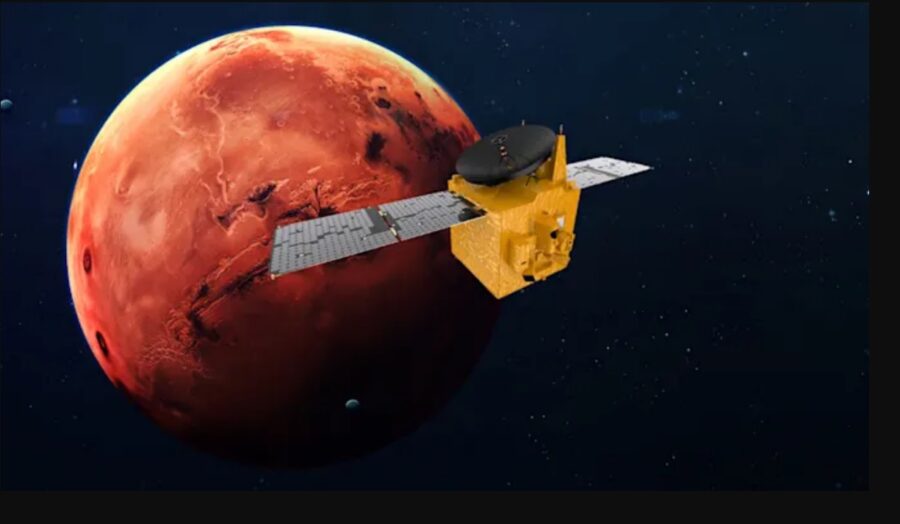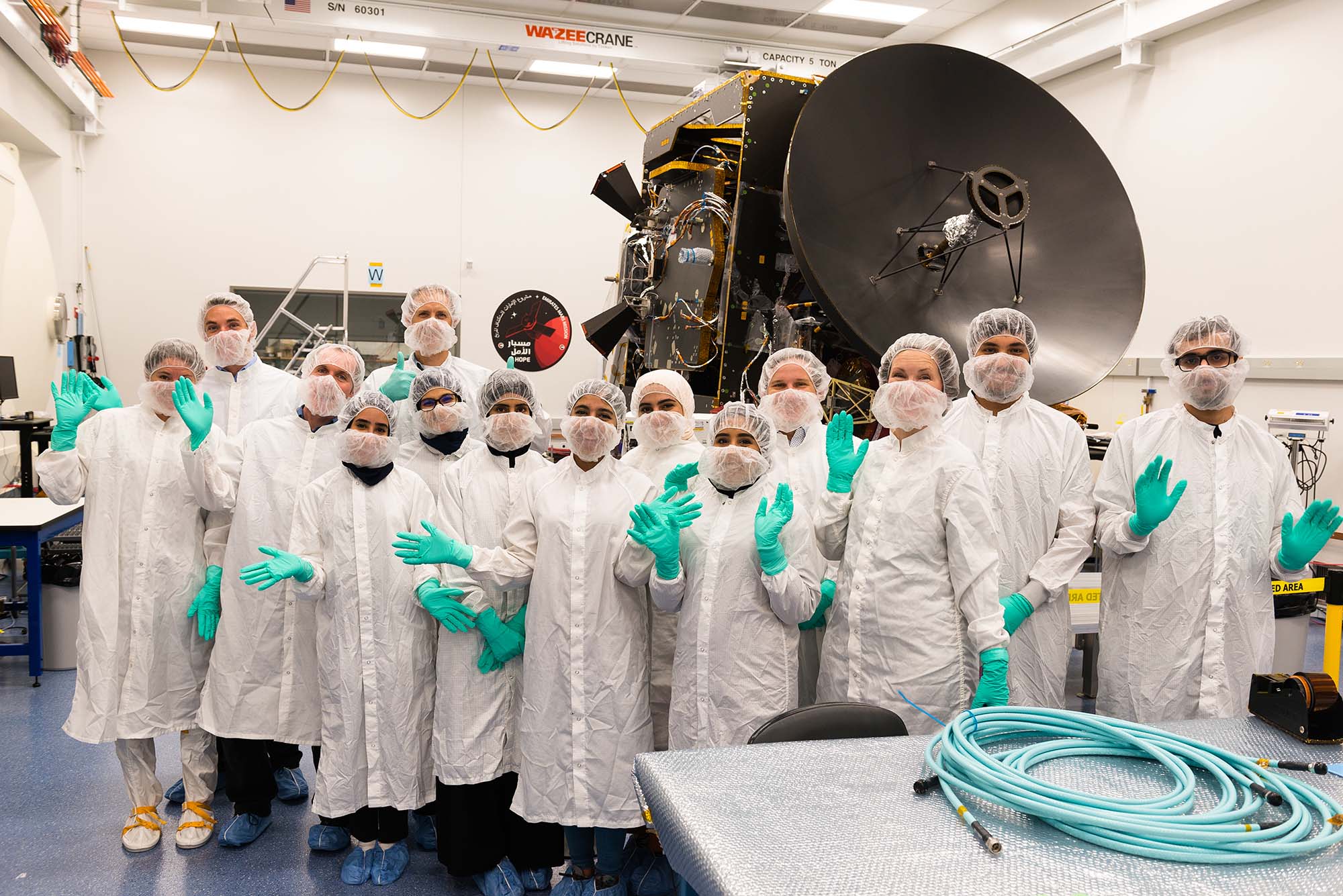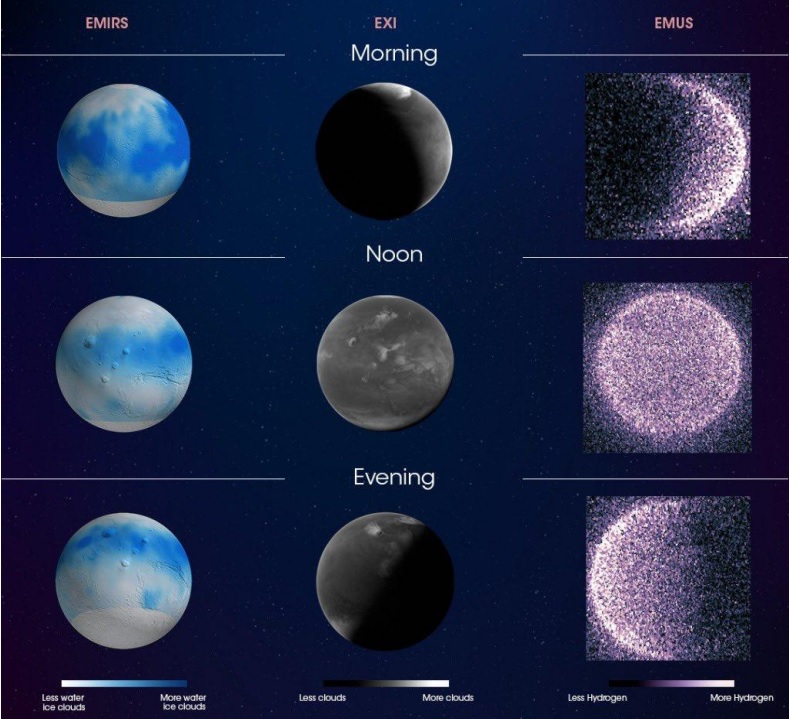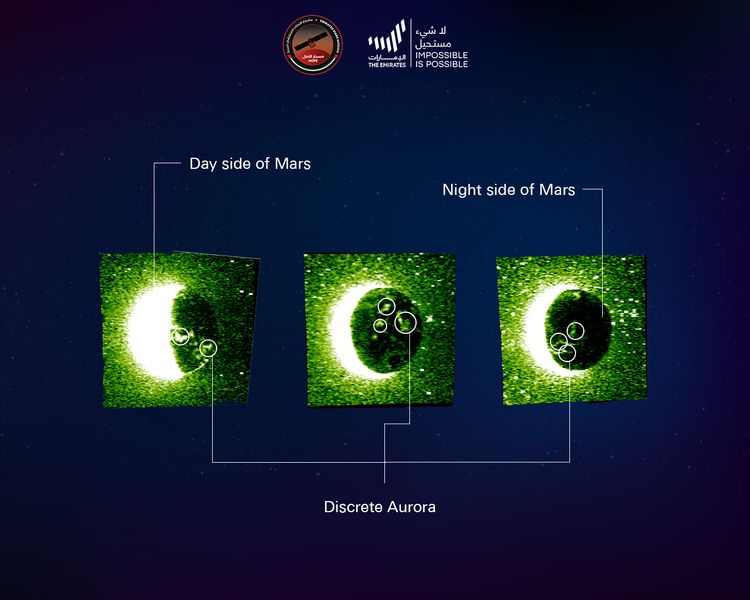The United Arab Emirates’ Hope Probe, on a wide orbit around Mars, provides views of the dynamic Red Planet.

Hope / MBRSC / UAE Space Agency
With more than a year in orbit around Mars now under its collective belt, the first interplanetary mission from the United Arab Emirates (UAE) is starting to show its stuff. The team recently released some of the first science results from the mission yesterday at the 53rd Lunar and Planetary Science Conference, currently underway.
The Hope Probe is truly an international endeavor: Built at the Laboratory for Atmospheric and Space Physics (LASP) in Colorado and launched on a Japan Aerospace Exploration Agency H-IIA rocket from Tanegashima Space Center on July 19, 2020, the spacecraft is controlled and operated from Mohammed bin Rashid Space Centre in UAE. It sends data back with the aid of deep space networks run by NASA and the European Space Agency.

LASP / UAE Space Agency
The spacecraft entered a wide-ranging 20,000- by 43,000-kilometer (12,400- by 26,700-mile) orbit around the Red Planet on February 9, 2021, and began science operations three months later. Its primary mission is to provide the first continuous global analysis of the Martian atmosphere, as well as daily surface changes and seasonal variability, over the course of a Martian year (687 Earth days).
Coordinated observations made by the EXI camera & the EMIRS instrument provide details of the surface and lower atmosphere of Mars over time scales of minutes to days. pic.twitter.com/s7LLd7pL26
— Hope Mars Mission (@HopeMarsMission) March 7, 2022
“The primary impact of the Hope data is to understand and characterize the diurnal behavior over short timescales,” says Michael Wolff (Space Science Institute). “Without this, it is like trying to understand the Earth’s weather by peeking your head out the door at 2 p.m. and 2 a.m. . . . What about the rest of the day?”

UAE Space Agency
Recently, the team produced a unique Mars Atlas, highlighting features and views of the Red Planet, along with seasonal changes that the Hope Probe has witnessed.
Hope was also on-hand to watch the evolution of a recent regional sandstorm that started in December 2021. The probe monitored the storm throughout February as it engulfed the Syrtis Major region in a distinctive-looking "shark fin" pattern. This event went unseen from Earth, since Mars was near solar conjunction.

UAE Space Agency
The Hope Probe carries three primary instruments to study Mars across the spectrum: The Emirates Mars Infrared Spectrometer (EMIRS), designed to measure dust, ice and water quantities along with atmospheric and surface temperatures; the Emirates Exploration Imager (EXI), a dual full-disk imager; and the Emirates Ultraviolet Spectrometer (EMUS), a far-ultraviolet imaging spectrograph designed to study gas escape from the tenuous Martian atmosphere.
Aurorae at Mars
Even before the main science operations began, Hope started seeing aurora at the Red Planet. NASA’s Mars Express and MAVEN orbiters have caught brief glimpses of aurora on Mars in the past, but Hope’s global view enabled it to see aurorae far more often.

UAE Space Agency
Magnetic topology is key to Martian auroras. Because the planet doesn’t have a global magnetic field, it doesn't have auroral circles at its poles as Earth, Jupiter, and Saturn do. Instead, aurorae tend to correspond to areas where so-called remanent fields, long-ago baked into the crust, interact with the solar wind.
In their images, the team found all three types of known Martian aurorae. Diffuse aurorae are generated when the atmosphere interacts with charged particles flooding in from solar outbursts. Proton aurorae, on the other hand, come from the protons in the solar wind that rain down and interact with the atmosphere's hydrogen. They are only detected on Mars's dayside.
Discrete aurorae are again a different beast, an ultraviolet phenomenon triggered by electrons ramming into Mars's upper atmosphere. These aurorae were particularly rare in previous data; however, thanks to its altitude and sensitive instruments, Hope has detected discrete aurora in two-thirds of its observations. These aurorae are more common at Martian dusk than dawn, for reasons not yet fully understood, and can sometimes become quite large and sinuous, with nicknames such as "worm" and "neuron."
Hope Looks Ahead
Next up for Mars Hope is a new full data release in April 2022 and the possible start of an extended mission next year.
“There are several timescales of interest for Hope studies: diurnal, seasonal and inter-annual,” says Wolff. “”We are excited to start to characterize the daily cycle during perihelion season (the next perihelion for Mars is June 21, 2022). And if there is an extended mission, we can see if what we thought we knew in terms of seasonal behavior has an inter-annual (year-to-year) variation.”
As Hope's science results continue to roll in, they complement results from two other missions on the ground. Hope was one of three spacecraft that made the journey to Mars in the 2020 launch window, along with NASA’s Perseverance rover and China’s Tianwen-1 mission. Look for updates on these missions in the coming days.
 0
0









Comments
You must be logged in to post a comment.